
Interview: How This Oscar Nom Edited Downsizing While Directing His First Feature
How editor Kevin Tent, ACE, maintains his highly regarded editing career while balancing his first time directing a motion picture.
Top image via Vertical Entertainment.
There is something to be said about a friendship that has spawned several Oscar nominations, but that just the type of relationship Kevin Tent has with Alexander Payne.
Director Alexander Payne is well regarded for crafting award-winning features like Election, About Schmidt, Sideways, The Descendents, Nebraska, and the upcoming film Downsizing. (Those films alone have 19 Oscar nominations, and 2 wins.) That said, Payne doesn’t work alone. One of his longest lasting relationships is with editor Kevin Tent, ACE.
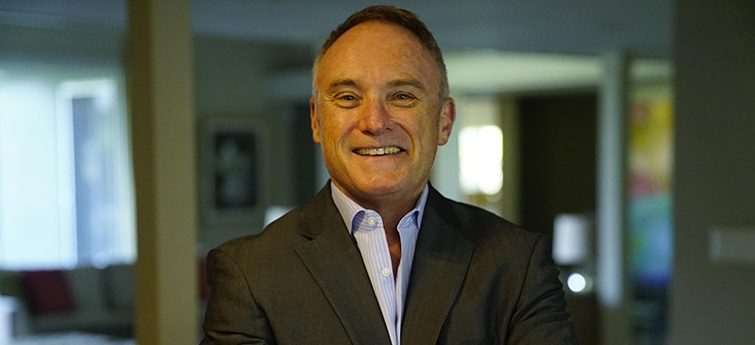
Image via Kevin Tent.
Tent has edited all of the previously mentioned films — earning himself an Oscar nomination for The Descendents. He has also cut several more highly praised features like Blow, Girl, Interrupted, The Golden Compass, and the pilot for HBO’s Hung.
This year alone, Tent will simultaneously see the release of his latest edit, Downsizing, and his directorial debut, Crash Pad. In a way, it’s just an extension of a long lasting relationship, as Payne directed Downsizing and served as an Executive Producer on Crash Pad.
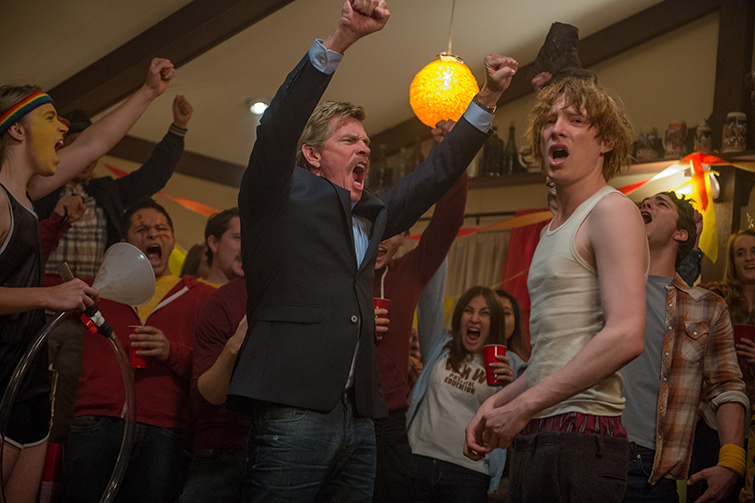
Image via Vertical Entertainment.
Crash Pad is an indie-comedy starring Domhall Gleeson and Thomas Haden Church that is currently available on Video-On-Demand. Downsizing, starring Matt Damon and Christoph Waltz, will release in theaters in December.
I had the chance to talk with Kevin Tent on his incredible editing career, working his way up as an editor, and the chance he finally had to direct his own film. Here’s what I learned in our conversation.
Kevin Tent: So you’re calling from Texas?
Michael Maher: I am. I’m in a little town called Denton, just north of Dallas. It’s actually the same little town Thomas Haden Church went to college.
KT: No way! Really?
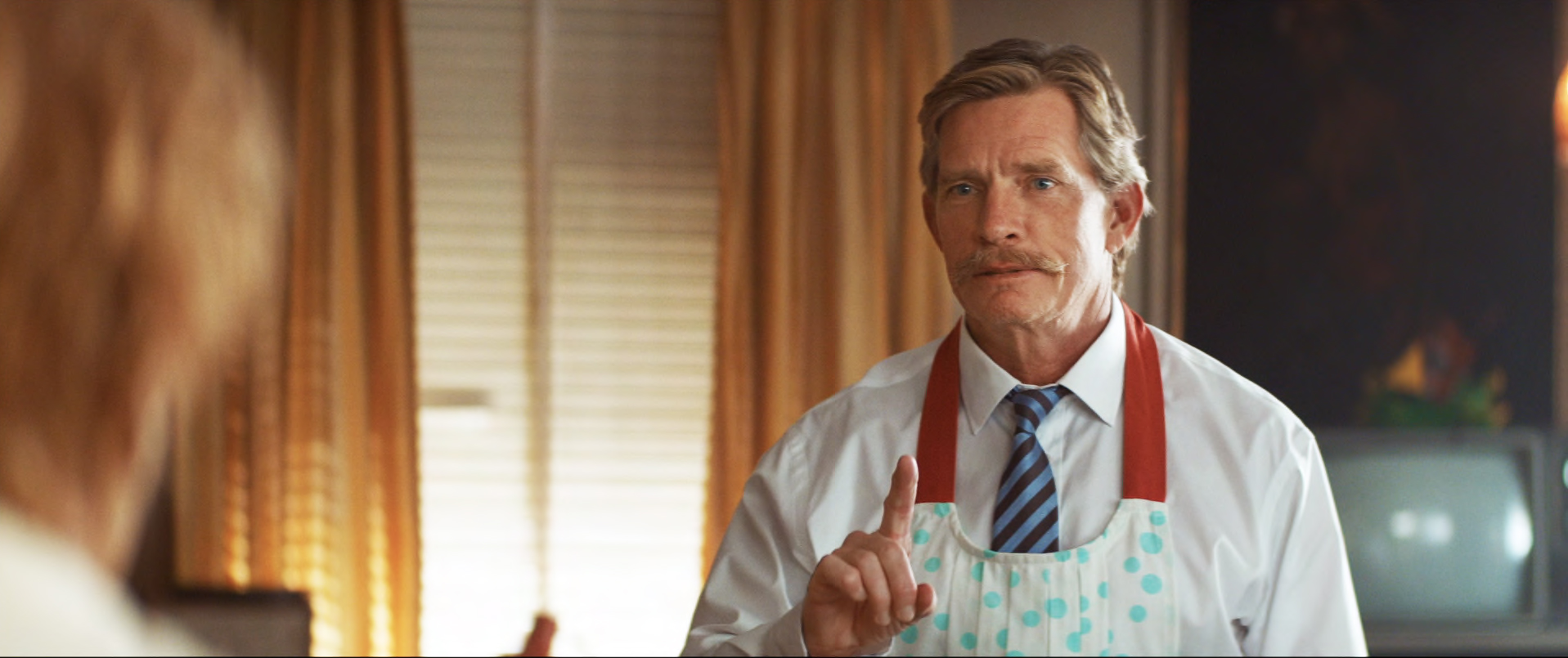
Image via Vertical Entertainment.
MM: Yeah, he was here at the University of North Texas, which is where I went to school to study Radio, Television, and Film.
KT: Ah, don’t they have a good music department too?
MM: Oh yeah, they are world-renowned for their jazz program.
KT: Yes! Yes, exactly. Actually, Daniel Rojas did a lot of the music in Crash Pad, and he went to school there. He did a lot of the club music and stuff like that. He’s an amazing guy, really talented. I thought that was the same school. How cool!
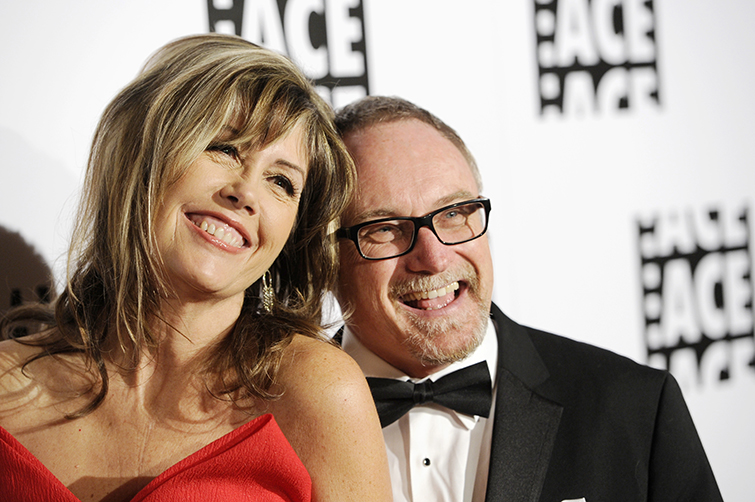
Image via Chris Pizzello/Invision/AP/REX/Shutterstock.
MM: Very cool. So, I want to pick your brain for a little bit. I’d like to start with editing, because I want to learn about how your experiences editing films helped prepare you for directing. Can you tell our readers about your editing history? You know, they always say editors never really planned on becoming editors.
KT: That’s true. That’s true, true, true. Well, I had always known I wanted to do something in film. I had this big notion of working in movies when I was a kid. But, I knew nothing about it. I grew up out in the country in upstate New York, outside of Buffalo. So I didn’t know anything about movies, but I knew I liked watching them — and I thought it would be fun to work in them.
So I made a couple short films with some friends, then decided to move to California, knowing that they made movies out here. I dropped out of college and came to Los Angeles, and went to LA City Film School. I kinda just stumbled into that place, but it was actually a very good place for me.
I went there, and then I cut my own short films, which I very much enjoyed — I thought that was kinda cool. Then I got my very first job out of film school, which was editing. It was editing for a little educational film company, editing those films we all saw in high school that were really boring, ridiculous, static, and cheesy. I was the editor on a bunch of those, like for a couple of years I did that.
Then I would also edit my friends short films, and stuff like that. I really started liking it a lot, and would just do it whenever I had a chance. Then I guess you could say my career starting going when I had an opportunity to re-cut a movie and finish a movie for Roger Corman.
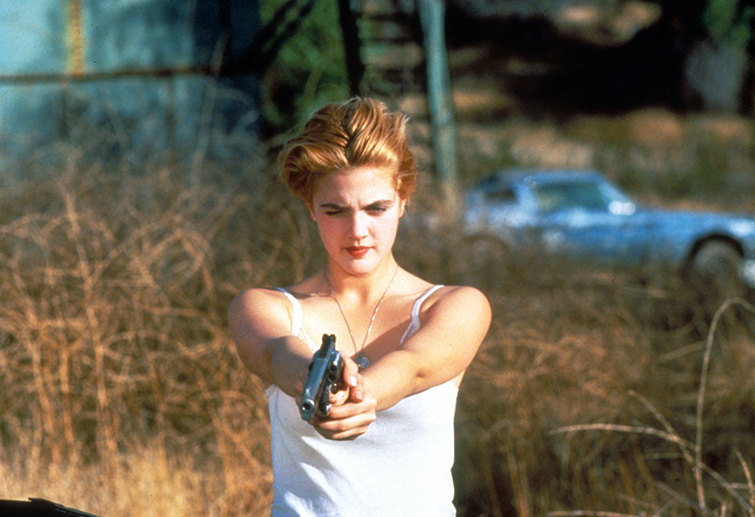
Image via Zeta/Kobal/REX/Shutterstock.
That was a great place to learn to edit. It was there where I really started going into this editing career, and it was great. So I stuck with it, and I kept cutting Roger’s movies, and then I moved into independents. I cut a movie called Guncrazy for Tamra Davis, which starred a very young Drew Barrymore. It was a really cool hip film, so then I started getting some indie-cred, which was right when the independent film scene was just getting started.
So yeah, then I kept on cutting and finally one day Alexander Payne called, and he was looking for an editor. We met and hit if off, and I’ve been doing his movies since — as well as many other things.
MM: That’s quite the career so far!
KT: It is. It’s been amazing, and I’ve been very fortunate, and very grateful.
MM: So in terms of the post-process. Tell us about how much it has shifted since you were cutting those indie films.
KT: Yeah, we were still cutting film. Ha, that’s how old I am! You know, it happened so fast. You don’t even have to be that old to see how much it’s changed, though now all the young apprentice editors and special assistant editors in our cutting rooms now have never worked with film. Which is so mind boggling.
Like, how many people load film into their cameras anymore, you know? But yeah, I started out on film on 16mm, and then 35mm. In fact, Citizen Ruth, Alexander’s first film, we cut that on film.
MM: Then did you primarily switch to AVID after that?
KT: I did, I did. I had a job, the first one I cut on Avid. This really nice editor in the room next door that showed me how to use it. The producers wanted me to take a class, and I called up to see how much the class on Avid cost. It was like $600 at the time, and I was like ‘I CAN’T AFFORD THAT!” So I didn’t do it. I just sat down and started cutting, and I kinda just learned it. It was very intuitive, and it was very much like cutting with film. So, I just dug in. I think it’s amazing, I love my Avid.

Image via Paramount/Kobal/REX/Shutterstock.
MM: Going back to your relationship with Alexander Payne, tell me about how much that process has changed. Not only have the budgets changed, but you’ve also done more VFX heavy work. What’s so different about editing something like Downsizing?
KT: It’s just a lot bigger. It’s a lot more moving parts, but in a lot of ways it’s the same. We approached it like all the other films we’ve done together. We really let the performances guide us in our decisions of when to cut, where to cut, how to shape a scene. Even though there were visual effects and everything, we really cemented the scenes around the performances and then built about from there with the visual effects.
It’s a multi-step process, but the main driving force in our decisions didn’t really change.
MM: How did your experience as an editor help shape your thinking when directing a film?
KT: I think I sorta had editing it in the back of my mind when directing. I messed up a couple times, where I was like ‘I don’t know why I didn’t go back and get more coverage on this thing, or I should’ve gotten more coverage.
My film was really low budget, and we didn’t really have a lot of time. Everything was moving really quickly. There were a couple of times where I shot things more in a oner — thankfully most of the times I did get coverage.
I ran out of time too. You want to get as much as possible, but we were moving really quick. For the most part I got everything I wanted, so my editor part of my brain was working.
I do remember being on the set and going, ‘alright, if this doesn’t work with them coming in the room here, the I can always cut to the scene midway here and try to get a different transition.’ I figured as an editor we could figure it out someway to get in and out of scenes faster.
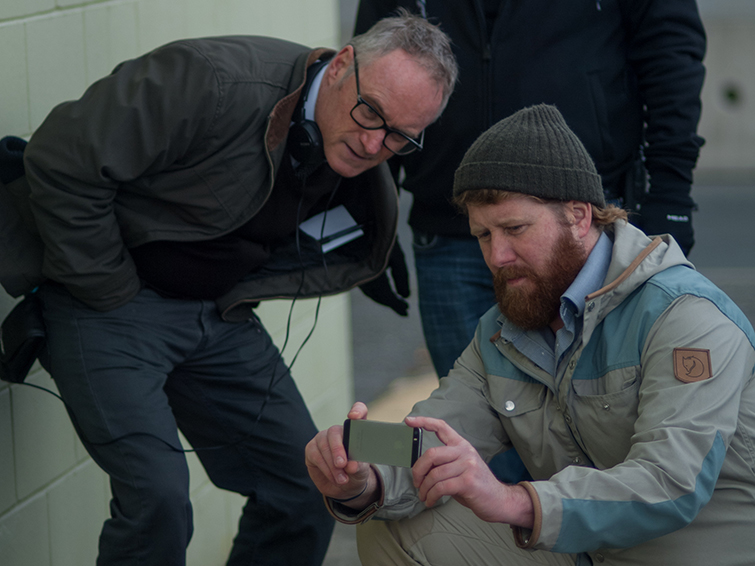
Image via Vertical Entertainment.
MM: So correct me if I’m wrong, but I believe the schedule of Downsizing was pushed, and you had this brief window to direct Crash Pad, so you’re working on your own film while production started ramping up on the other. How did you manage to balance these two projects?
KT: I was really hard. It was really hard to do.
So I had been trying to get the movie made for a while, and then I got a heads up early on that Downsizing was gonna push to wait for Matt Damon. I saw a window of a year, so if I was ever going to get this movie made, I’m gonna have to push hard now.
I got a really great producer, Bill Horberg, and I said to him that I had this short window and asked if he would produce it. He had already told me that he really liked the script, and he said yes. That really got the ball rolling. We were shooting while Alexander was in pre-production, and then we were cutting while he was finishing pre-production, and then I was finishing while he started shooting. So it was really hard to do both things, but there was another editor helping cut dailies while I was working on them too, so when I was doing my sound mix, they covered for me.
Plus my son was graduating high school at the same time, and trying to figure out where he was going to college. It was like three major life things going on at once. It was pretty crazy, but we survived. It was a wild time.
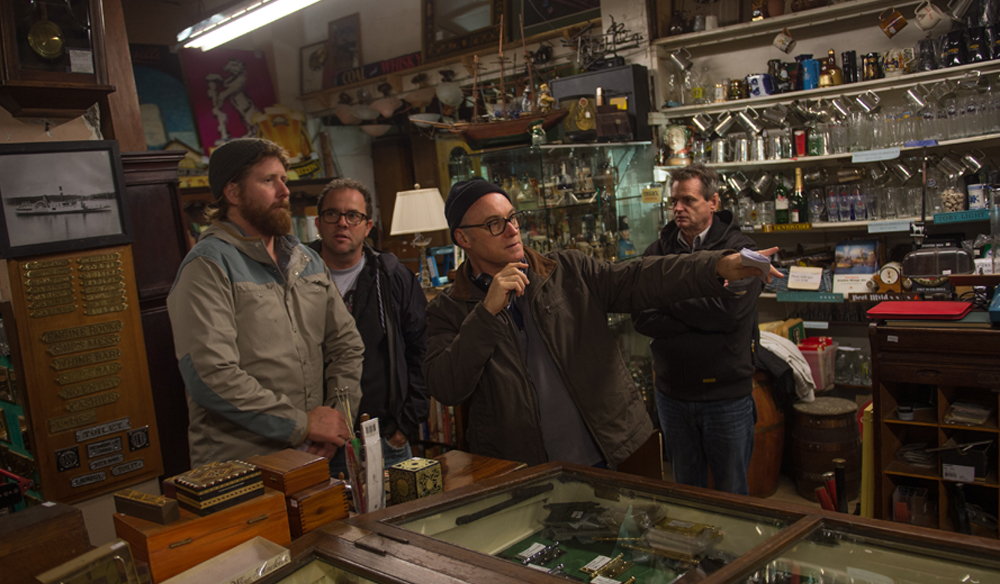 Image via Vertical Entertainment.
Image via Vertical Entertainment.
MM: So in your role as a director now, what was it like having to assemble a cast?
KT: You know, it’s all so fluid and happening so quickly, you’re not even aware of what exactly is going on. All I know is that we were so lucky to get Domhnall Gleason, and he was the only person I really wanted for that role. I had seen him in About Time, and he was really charming and funny in that.
And then we were really lucky to get Thomas [Haden Church], you know I had known him from Sideways, and he kind of did us a favor and came in. You know, it was a first-time director and not very much money and all that stuff, but he joined us. He and Domhnall just had the best chemistry, and they were so funny on the set and off the set. We were really lucky to get those two guys.
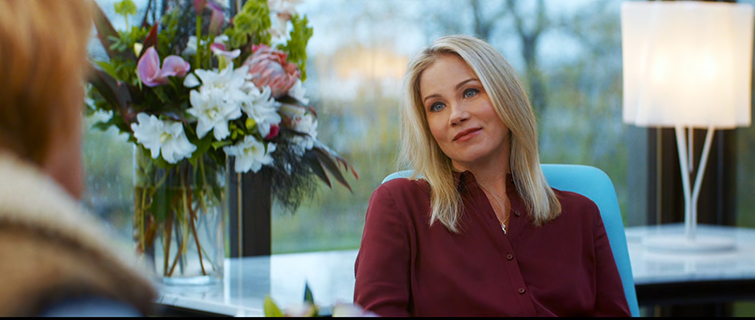
Image via Vertical Entertainment.
Then Nina [Dobrev] was the next person to jump onboard. She was looking to do a comedy. And the last person we got right before pre-production was Christina Applegate.
You know, it’s hard to cast. All these balls are up in the air, and then it just falls in place. Don’t ask me how it all happened, it all happened very quickly. It happened, and it happened in a great way. I was very lucky.
MM: When you’re cutting a feature like this, music is such a big part of the process. What’s it like working on an indie-film with a limited budget versus a feature like Downsizing?
KT: Music is critically important to a movie. I always knew it from editing, but realized it when directing that who your composer is, is just as important as your lead actor. They really have their own personality and sound, and you’re adding this very strong element to your movie.
I was lucky to get Rolfe Kent, who also did Downsizing. In Crash Pad we had a low budget, but that doesn’t mean you don’t get great music. There are so many talented people like Daniel Rojas, who did amazing.
A lot of times you cut to music, that’s a lot of what we do. Hopefully you can afford the music you use, but music can get expensive.
Luckily there are a lot of talented people out here, and it’s a lot like when I started editing. I worked for no money, I did things for free. I worked just to get experience and more credits. There’s lots of people who still do that with music, or editing, or directing, or whatever.
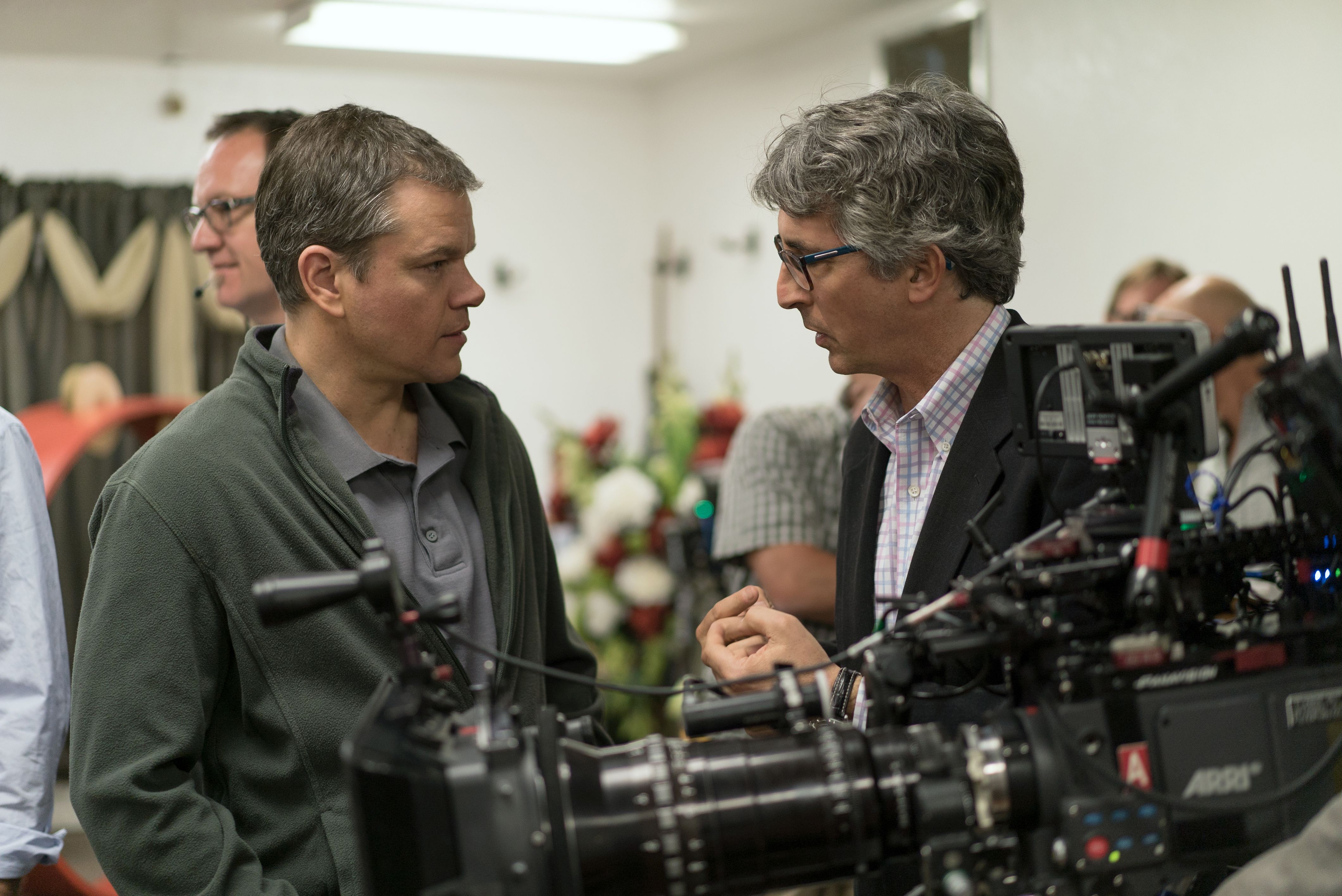 Image via REX/Shutterstock.
Image via REX/Shutterstock.
MM: What’s the difference for a director during post-production? How involved are you with every cut?
KT: Well for Downsizing, we had a whole army of people. We had a visual effects department, post-production supervisors, we had everybody. But on a little film, you just have less of all those people.
I did have a fantastic editor that I worked with, Franco Pante, who was one of my assistant editors back 10 or 11 years ago on a Barry Sonnenfeld film that was shot in Vancouver. We worked very closely together. I just couldn’t help myself, so I did some cutting too, and we would cut back and forth. He would send me some scenes, and I’d show him things I had in mind. It was a great back and forth, it was very enjoyable. He made some of my favorite cuts in the movie, that I don’t think I would have ever thought of, and that was refreshing and great. He did a great job.
MM: Anything else you’d like to share with our readers?
KT: Well, if they see Crash Pad, I hope they like. And if they see Downsizing, I hope they like it. I hope they get a kick out of them.
Want more behind-the-scenes looks and interviews like this? Check out these articles.
- How Roger Deakins Shot and Lit Blade Runner 2049
- A Look Inside the Post-Production Process Behind “It”
- Interview: Behind the Scenes with YouTube’s Binging with Babish
- How Editor Paul Machliss Cut Baby Driver in Real Time on Location
- Interview: Director of Photography Jake Swantko of Netflix’s Icarus
- How “American Vandal” Shows Us the Future of Documentary Film





